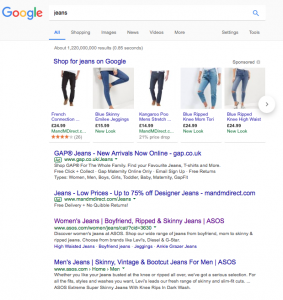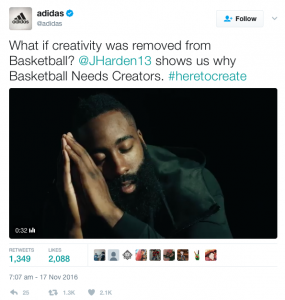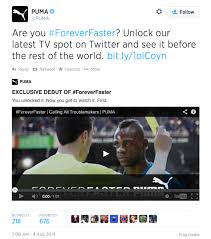The Internet has transformed business marketing to promote via website, blogs, email, and social media (Marketing Donut, 2017). Social media marketing is a popular and effective marketing tool, due to its accessibility and reach to customers. However, all marketing platforms are directed to the business website, with links or as a call of action. When a customer enters an organization website they typically do so in order to find information on a given product/service or to undertake a particular transaction, such as purchasing a product/service (Taylor & England, 2006). Rowley (2000) stated that consumers approaches to product searching on website are a key factor in successful e-business and that any approaches that can be enhance product visibility and ease of location are key in defining and maintaining competitive advantage. This blog aims to provide tips to make a business website effective.
So what should a business consider to implement on their website?
User-friendly
Fundamentally a user-friendly website allows greater navigation to locate information or undertake a transaction (Taylor & England, 2006). In website marketing terms, the more difficult it is for the consumer to locate what they are looking for on a website, the greater the likelihood that the consumer will simply give up and use a different website instead (Taylor & England, 2006). Clear call of action, can help provide a user-friendly design, while optimizing, as it directs users to required pages and provides a focus to the website (Boag, 2017). This is beneficial for small businesses that have limited budget, as it is a useful technique to convert visitors into customers.
Lets take a look at a good example:

Miss Selfridge consists a user-friendly design website, demonstrating clear drop down menus, search option and image maps, while having minimal text. Thus holding good use and clear call of action with the use of their images. Therefore allowing greater engagement through easier navigation, e.g. the sale section at the bottom.
However, an effective call-of-action (CTA) is complex to achieve, it takes creativity, patience and a lot of testing (Smith, 2015). CTA prominently sits on the homepage and helps convert a visitors to users, therefore if its not appealing and convenient enough it will lose its prime use and benefit of using it (ImForza, 2017). Thus, losing on further engagement and not leaving a good impression on customers.
Check out the most effective techniques for call to action
SEO keywords
Despite, having an aesthetically pleasing website, it is vital that it can actually be found by search engines, ensuring site is productive. Gilmore (2016) stated that 81% of consumers use search engines to research a product/service or business before making a purchase. For greater visibility around the business online, keywords should be identified and incorporated throughout the website (Fiorini & Lipsky, 2012;Gilmore, 2016). Keywords could be included in web content like headlines, summaries and links, which will make it possible to find the website through the search engines (Jantsch, 2016). This is beneficial as a website that is well optimized for search engines “speak the same language” as its potential visitors based with keywords on SEO help connect searchers to site (Wordstream, 2017).
However, there is an implication for businesses to pick the right keywords (Mothner, 2010). This is because if longtail keywords are used then it will drive less traffic and be difficult to insert into content/website than short tail keywords (Abishek, 2017). Although short tail keywords are highly competitive, therefore more difficult for one site to rank a good position, these are normally taken by big companies (Smart Traffic, 2010). Therefore content should be unique and specific to the business, prevent duplicate content, to minimise this limitation (Kissmetrics, 2017).
For example: when the keyword jeans was entered only popular shops appear but for smaller businesses it is more specific. Therefore emphasising the need for content to be unique so useful keywords are selected.
Check out the video for 5 tips for choosing keywords using Google.
Check out how to do keyword research for SEO, this will help you pick the right keywords.
Mobile Responsiveness

With the growing use of mobile phones, more searches are being carried out through this medium than other platforms, like desktop, tablets and laptops (Sterling, 2015). Therefore placing it a primary screen for searches and something businesses should consider if not implemented. This is beneficial, as it will increase conversions, as people are likely to go to competitor’s site rather than zooming in and out in order to navigate a site, as un-optimized sites irritate visitors (Jones, 2016). Thus referring back to user-friendly layout to ensure a better user experience. Moreover, if not optimized businesses will be losing ranking on search engines, which indicate now boosts mobile-friendly sites on search results (Mordue, 2015).
This is an example of a website that is not optimised for mobile compared to one that is. Clearly we can see that the second one is much more user-friendly, as it does not require zooming in/out or scrolling to read text, making it covinient for the user. The first website,however, looks much more cluttered, as the main body is full of text and sidebar navigation is had to view, making it difficult to use. Also it is lacking the simplicity and modern look of the second one, therefore making it less functional and leading consumers to select other sites. Thus small businesses should consider making their websites to be more mobile-friendly in order to stay competitive with big organisations and meet the needs of a wider audience.

Check out 10 benefits why businesses should consider mobile sites
Check out 9 tips to creating a mobile-friendly website
How to measure the effectiveness of the website
- Average time on page- A key factor to consider if average time is low, as it indicates current content on site needs to be reviewed for greater engagement. Are their images, videos or just text? (Cain, 2012)
- Search engine traffic- The amount of traffic being reffered to your site through search engines, reinforcing the need for keywords as pay-per-click may be expensive for small business (Cain, 2012)
- Conversion rate- The percentage of visitors to your site who take a specific action (Cain, 2012)
- Google Analytics
To check out more methods to track website, click here.
With the use of these metrics, businesses will be able to see how functional the website is. This is primary crucial for small businesses as marketing through their website is key as other methods may be expensive, therefore if website is not effective, it could lose against competitors.
Overall, small businesses should not only consider the design of websites but other factors that will influence the productivity, such as functionality and mobile optimization for searches. If one of these are not implemented it may influence the overall performance.
References
Abishek, R. (2017) The Disadvanatges of Long Tail Keywords in SEO. [Online] Available: http://www.abiwrites.com/the-disadvantages-of-long-tail-keywords-in-seo [Accessed 1 May 2017]
Boag, P. (2017) Call to Action: The 10 Most Effective Techniques. Boagworks. [Online] Available: https://boagworld.com/design/call-to-action/ [Accessed 27 April 2017]
Cain, K. (2012) Measuring Marketing Effectiveness: 6 Metrics You Need to Track. Content Marketing Institute. [Online] Available: http://contentmarketinginstitute.com/2012/10/measuring-marketing-effectiveness-metrics/ [Accessed 1 May 2017]
Cisnero, K. (2015) 9 Tips To Creating A Mobile-Friendly Website. Hootsuite. [Online] Available: https://blog.hootsuite.com/9-tips-to-creating-a-mobile-friendly-website/ [Accessed 1 May 2017]
Fiorini, P.M. & Lipsky, L. (2012) Search marketing traffic and performance models. Computer Standards & Interfaces, Vol. 34, pp.517-526
Gilmore, L. (2016) 7 successful marketing tips through online presence. TNW. [Online] Available: https://thenextweb.com/the-power-of-personal/2016/09/30/7-ways-successful-marketing-online-presence/#.tnw_JrcbWKe7 [Accessed 27 April 2017]
ImForza, (2017) How to Pick an Effective Call to Action [Online] Available: https://www.imforza.com/blog/how-to-pick-an-effective-call-to-action/ [Accessed 27 April, 2017]
Jantsch, J. (2016) 7 Ways to Improve Your Search Rank With Social Media. Social Media Examiner. [Online] Available: http://www.socialmediaexaminer.com/7-ways-to-improve-your-search-rank-with-social-media/ [Accessed 1 May 2017]
Jones, A. (2016) How To Measure Website Effectiveness In 2016. Jdr Group. [Online] Available: https://blog.jdrgroup.co.uk/digital-prosperity-blog/how-to-measure-website-effectiveness-in-2016 [Accessed 1 May 2017]
Kissmetrics, (2017) 7 Critical SEO Errors of E-commerce Websites. [Online] Available: https://blog.kissmetrics.com/seo-errors-ecommerce-websites/ [Accessed 1 May 2017]
Marketing Donut, (2017) Online Marketing. [Online] Available: https://www.marketingdonut.co.uk/online-marketing/online-marketing-overview [Accessed 1 May 2017]
Mordue, L. (2015) 10 Benefits of Mobile Websites: Why You Shouldn’t Get Left Behind. Jdr Group. [Online] Available at: https://blog.jdrgroup.co.uk/digital-prosperity-blog/10-benefits-of-mobile-websites-why-you-shouldnt-get-left-behind [Accessed 1 May 2017]
Mothner, M. (2010) 5 Secrets to Selecting Highly-Effective SEO Keywords. Inc. [Online] Available: https://www.inc.com/guide/2010/06/picking-effective-seo-keywords.html [Accessed 1 May 2017]
Rowley, J. (2000) Product search in e-shopping: a review and research propositions. Journal of Consumer Marketing, Vol. 17, pp.20-35
Smart Traffic, (2010) Types of Keywords, The advantages and Disadvantages [Online] Available: http://www.smart-traffic.co.uk/blog/types-of-keywords-the-advantages-and-disadvantages/ [Accessed 1 May 2017]
Smith, J. (2015) The Power Of The Call to Action & How Its Strength Boosts Conversion. Marketing Land. [Online] Available: http://marketingland.com/power-call-action-strength-boosts-conversions-145845 [Accessed 27 April, 2017]
Sprung, R. (2015) How to Do Keyword Research for SEO: A Beginner’s Guide. Hubspot. [Online] Available: https://blog.hubspot.com/marketing/how-to-do-keyword-research-ht#sm.000rmg185lafe4t11mx1q9wflkmdj [Accessed 1 May 2017]
Sterling, G. (2015) It’s Official: Google Says More Searches Now On Mobile Than On Desktop. Search Engine Land. Available: http://searchengineland.com/its-official-google-says-more-searches-now-on-mobile-than-on-desktop-220369 [Accessed 1 May 2017]
Taylor, M.J. & England, D. (2006) Internet marketing: web site navigational design issues. Marketing Intelligence & Planning. Vol. 24, pp.77
Wordstream, (2017) SEO Keywords: How Better Keyword Research Gets You Better Results. [Online] Available: http://www.wordstream.com/seo-keyword [Accessed 1 May 2017]




 One of the newest forms of social media is micro-blogging, most commonly associated with
One of the newest forms of social media is micro-blogging, most commonly associated with 













 , it’s a treat’, with that The Body Shop managed to trigger my curiosity and entice me to open the email to face my fate. With the ever growing and evolution of the Internet, email marketing has acquired a critical role in building and maintaining companies relationship with customers, making it an essential medium of marking communications (Ellis-Chadwick and Doherty, 2012).
, it’s a treat’, with that The Body Shop managed to trigger my curiosity and entice me to open the email to face my fate. With the ever growing and evolution of the Internet, email marketing has acquired a critical role in building and maintaining companies relationship with customers, making it an essential medium of marking communications (Ellis-Chadwick and Doherty, 2012).


